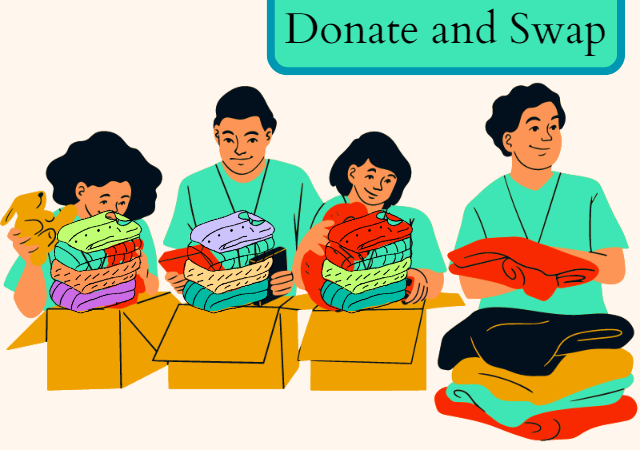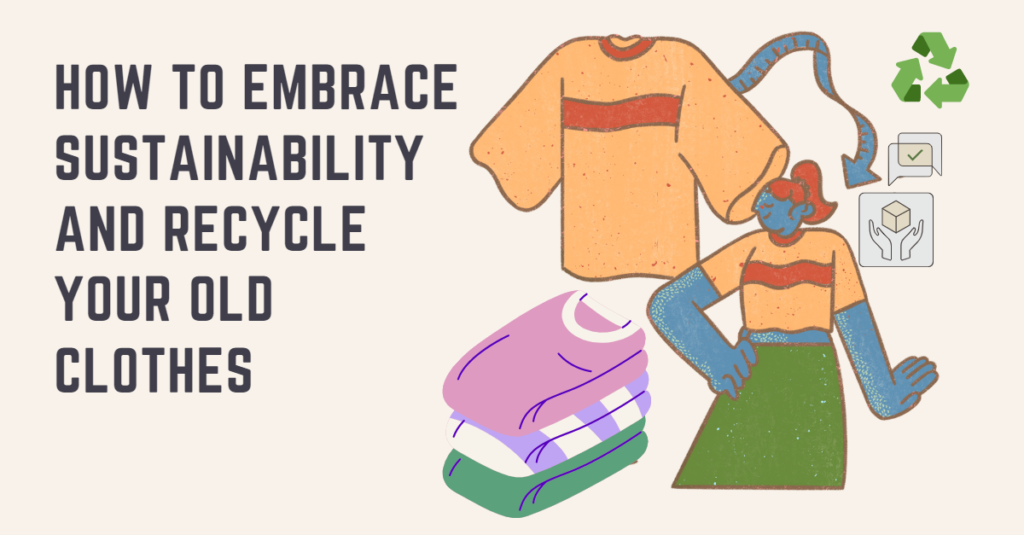How to Embrace Sustainability and Recycle Your Old Clothes
Introduction:
In today’s fast-paced fashion industry, where trends come and go, we often find ourselves with a surplus of old clothes that we no longer wear or need. Instead of letting them accumulate in our closets or ending up in landfills, recycling our old clothes can be a powerful way to contribute to a more sustainable future. By adopting recycling practices and embracing a circular fashion economy, we can minimize waste, conserve resources, and make a positive impact on the environment. In this article, we will explore practical ways to stay sustainable and recycle our old clothes.
How to Embrace Sustainability and Recycle Your Old Clothes
1. Reevaluate and Repurpose:
Before discarding any garments, take the time to reevaluate your wardrobe. Consider if there are any items that can be repurposed or given a new lease of life. For instance, you can turn an old t-shirt into a cleaning rag, transform denim jeans into shorts, or convert a dress into a stylish top. The possibilities are endless, and by being creative, you can extend the lifespan of your clothing while reducing waste.
2. Donate and Swap:

If your clothes are in good condition but no longer suitable for your personal style, consider donating them to charitable organizations or local thrift stores. These items can benefit individuals who cannot afford new clothing while promoting a more sustainable consumption culture. Additionally, you can organize clothing swaps with friends, family, or even your community. Swapping clothes allows you to refresh your wardrobe without contributing to new production and also fosters a sense of community and shared responsibility for sustainable fashion practices.
3. Sell and Buy Secondhand:

Another option is to sell your old clothes through online platforms or consignment stores. This way, you not only declutter your closet but also provide others with the opportunity to buy pre-loved items at a lower cost. Likewise, when you need to update your wardrobe, consider buying secondhand clothing. Thrift stores, online marketplaces, and vintage shops offer unique and affordable options that can add character to your style, all while reducing the demand for new production.
4. Participate in Clothing Recycling Programs:
Several clothing brands and retailers have implemented recycling initiatives to tackle the issue of textile waste. Some companies offer drop-off points or mail-in programs, where you can deposit your old clothes for recycling. These programs sort the garments and divert them from landfills. The materials are then processed and used to create new textiles or other products.
5. Explore Innovative Recycling Technologies:
As sustainability becomes a priority, innovative recycling technologies are emerging. Researchers are developing methods to break down textiles into their basic components, such as fibers and dyes, allowing for the creation of new materials. These advancements offer promising opportunities for a circular fashion economy. Keep an eye out for local recycling facilities or companies that specialize in advanced textile recycling techniques.
6. Educate Yourself and Others:

Raising awareness about the environmental impact of the fashion industry and the importance of recycling clothes is crucial. Stay informed about sustainable fashion practices, circular economy principles, and recycling options. Share your knowledge with friends, family, and communities through social media, workshops, or discussions. Encourage others to adopt sustainable habits and make conscious choices when it comes to clothing consumption.
Conclusion:
As individuals, we have the power to drive positive change by adopting sustainable practices and recycling our old clothes. By reevaluating, repurposing, and donating our garments, we can reduce waste and promote a more circular fashion economy. Selling and buying secondhand clothing further supports sustainable fashion choices, as does participating in clothing recycling programs and exploring innovative technologies. The key is to be mindful of our clothing consumption, make conscious decisions, and educate ourselves and others about sustainable fashion practices. Let us embrace the power of recycling and contribute to a more sustainable and responsible future.

My name is Rohit Vagh and I’m a content writer specializing in fashion and lifestyle. I have three years of experience in this field and have written various articles. My writing style is creative and engaging, and I strive to create content that resonates with my readers. I have a deep passion for fashion and am constantly researching the latest trends and styles to make sure my readers are up to date. I’m excited to continue my career in blogging, and I’m always looking for new opportunities in the fashion and lifestyle space.





